| Read Time: 27 mins 18 secs |
I am sure that every developing student has heard their Sifu say “Don’t pull back the arms” or “Don’t allow your arms to collapse”. We have all experienced the frustration of delivering a strike and quickly being pinned or crowded so that our arms are tied up in knots by a skilled, more advanced student. This is a usual part of the developing student’s Wing Chun journey in seeking to master relaxed structure.
A key stepping-stone on that path is for the developing student to understand the basic striking mechanics involved in delivering a punch and returning to a position of readiness where they can quickly strike again or transition to a different technique.
In this article I will recap on the basic mechanics of the Wing Chun strike and introduce what ’the gap’ is and why it is an important indicator that reveals where muscle tension is incorrectly being used, or where correct relaxed structure is present.
I will explain what recoil is in the context of the correct Wing Chun strike and provide a useful exercise for letting go of muscular tension and being able to achieve this action. I will explain why recoil action is a foundation stone for Chi Sau and at the very heart of effective Wing Chun.
The Basic Mechanics of a Wing Chun Strike
In the article, The Importance of Relaxed Structure in the Wing Chun Punch I introduced the four stages of extension to show the various positions in space and time that the relaxed arm passes through during the process of delivering a punch from the Chamber position. These key stages are demonstrated by the Wing Chun figure in the images below:
I pointed out that delivering a punch through an incorrect technique means that the arm remains locked-out and fully extended as in Figure 3 and does not relax into position 4. What was not covered in the previous article was how this incorrect action necessarily frustrates the Wing Chun student from then being able to correctly transition between techniques.
Where the arm remains fully extended, being artificially held in place by muscle tension, this poses a problem for the developing Wing Chun student. The problem is posed as a question – how do I move my arm from this position into the next to be able to strike again?
Relaxation not Collapsing / Pulling Back
The answer to this question for the beginner student is to either let the arm ‘flop’ backwards into the body or to maintain tension in the arm but ‘pull’ the arm backwards. When you think about it in terms of a technique passing through the four stages of extension, here the student is attempting to move from position 4 of one technique to position 4 of another technique without then passing through the 4 stages of extension sequence.
Without yet understanding how to achieve whole-body relaxed structure the developing student is perplexed as to how they can allow their arm to travel from a fully extended position backwards to the body without either (1) pulling it back in or (2) allowing it to relax fully and collapse backwards.
Where the beginner student lets the arm ‘flop’ backwards as per figure 4 this means that the weight of the arm relaxing back is stopped artificially at that position by tensing muscles in the arm and shoulder. The same is true if the student maintains tension in the arm but ‘pulls’ the arm backwards – in both cases a rigid limb lacking forwarding structure is presented to the opponent which can then be easily knocked out of place or controlled by the opponent to unbalance their structure.
Alternatively, if the student lets the arm relax back (but without structure) this means the limb lacks structure. It will collapse back to on /behind the line – as shown in Figure 7. A Wing Chun opponent using forwarding will project into the space and can continue forwards to ‘press’ or pin the student’s arm, or simply drive a powerful strike through the arm as there is no structure to deflect it.
The Importance of Retraction – Creating the Gap
The point here is that, although it would be possible for an experienced Wing Chun practitioner to recover from this artificially extended position, this is a point of no return for the developing student. Unless you correctly propel the arm forwards with relaxed structure through the stages of extension there is no option to retract the arm without then compounding incorrect action.
At least, it is important to have propelled the arm correctly through the position in Figure 3 as this primes the arm ready to strike from this position. Very much like the action of a snake that is up ready to strike – it has created the relaxed structure and striking position ready to drive forwards and attack, returning to that position to be able to attack again and again. As such, it is very important for the developing student to recognise Figure 3 as a position which must be primed in order to then strike from and return to after the strike back into the ‘primed’ relaxed structure ready to strike again.
This is why it is worth the developing student spending dedicated time and effort to make sure they are able to extend the arm through all four stages of the punch (or any technique) until they are able to end up in the position shown in Figure 4 (or for the strike to recoil to the correct position for that technique), with the arm still forwarding through relaxed structure. I recall spending many weeks of dedicated focus and repetition drilling in the muscle-memory to ensure I had embedded the learning to allow this extension mechanics of the arm to become second nature.
The importance of this can be seen from the sequence below:
In the first image on the left the Wing Chun practitioner begins the movement from the Chamber position using the natural weight of gravity to allow the arm to add momentum. In the second image from the left they are actively driving the arm forward and outward to the strike position shown in the second image in from the right. At this point the practitioner stops the action of forward propulsion but retains the action of forwarding so that the arm relaxes back into relaxed structure ready to strike again (the third image from the left).
In looking at the above two stages in closer detail we are able to compare the distance that the arm recoils from the full extension back to the ‘Strike Readiness’ position of the arm ‘forwarding’ with relaxed structure. This is about 3 inches / 7.62 centimetres in distance which, for the beginning student seems like a very small distance and one that is insufficient to deliver a punch.
This is one of the challenges for the developing student who only uses the arm and shoulder in delivering a punch. The only way to generate force using the arm and shoulder is to throw it forwards over a large distance from a position level with the head / shoulder using muscular force, or to swing it around as in a round-house style punch. In both cases, the distance the arm travels is considerably greater that the close-range strikes required with Wing Chun, and certainly starts from a position on or behind the very first line in front of the character as shown in Figure 7 below.
In the article The Importance of Relaxed Structure in the Wing Chun Punch I gave an example of the end-to-end process of the stages of extension being like a battering ram. In many regards this is the type of feeling the beginner student expects is required in the action of a punch. However, at the point of this recoiled position the developing student’s fist is only pulled back a very small fraction and therefore does not have the space for the forward momentum and the natural weight of the arm under the force of gravity to deliver an impact force.
If the beginner student tried to employ the same biomechanics, whereby the mechanics of striking are limited to muscles in the arm and shoulder (and without any rotational torque in the body), the maximum impact force they would be able to achieve would extend no further than a gentle tap on the opponent. The correct action of using the whole of the body, generating force from the ground up, through the legs, back, shoulders, and arms is covered in the article The Relaxation versus Structure Dilemma – Article 2.
In order to understand how to correctly use whole body mechanics reading this article is definitely a prerequisite to a detailed grasp of recoil. The key difference is that rather than acting like a swinging battering ram, the body dynamics in the ‘Strike Readiness’ position are better understood as a piston that is retracted and ready to be fired. However, the focus on this article is not again explaining the complexity of this action and just on being able to achieve the action of recoil. The following description and exercises will help the developing student achieve this which, in turn, is part of the wider learnings involved in achieving relaxed structure and whole-body application.
For the advanced Wing Chun practitioner this recoil space of 3 inches actually feels like plenty of room. Indeed, a key feature of mastering Wing Chun is the ability to control your body and use explosive force over very short distances. It is this very principle that sits behind the concept of the One Inch Punch that Bruce Lee made famous. It is certainly true within Wing Chun that the better your level of control the smaller the range of movement needed to be able to operate in – working from outside the optimal and – over time – gradually refining to inside the correct range of motion and positioning.
Understanding Recoil
In order to understand the role that recoil plays in the Wing Chun punch it is important to grasp the concept of what recoil is, as this actually has a number of different uses as a term.
In its most common, everyday use recoil is used as a verb meaning the action of ‘to suddenly spring or flinch back in fear, horror, or disgust’. This is a physiological process which is part of our bodies natural defence mechanism. This is important to understand in Wing Chun and I cover in different articles as part of reprogramming the mind/body not to tense up in the face of attack by an opponent. However, this is not specifically relevant here as this is not the intended use of this term.
Another common use of the term recoil is that used in the context of weapons (guns and artillery). Here this term is used in two ways, firstly in terms of the force generated backwards into the shoulder from a rifle being fired or the backwards jolt of a pistol in the hands. Secondly, in accordance with the laws of physics and the principle of conversion of momentum – whereby the action of the forces involved in causing the bullet to project down the barrel – requires an equal and opposing action in the opposite direction. This recoil action is built into the mechanics of a rifle, for example, with internal components built to allow for this action.
Again, this definition of recoil which relates to the balance of forward and backward opposing forces is not the intended use here. Instead, it is the physical property of ‘rebounding or springing back through force of impact or elasticity’. And, more specifically, the action of the muscles, tendons, sinews, and joints extending and contracting through movement, under the force of gravity.
It is important to note that this is not the same as used in Boxing where ‘Elastic Recoil’ is about the rotational torque momentum of the core using the muscles to then add force through an elastic momentum and force to the arms whipping around with the body. Indeed, the Wing Chun relaxed structure is more consistent with the Boxing principle of ‘Bone Strength’ which is where a piercing blow is directed into the body through the wrist, arm, elbow, and shoulder all being aligned.
A Pathway to Finding Recoil Action
As with every new learning in Wing Chun the developing student must have a ‘light-bulb’ moment – this is where they feel for themselves what it actually means to be able to do a given movement, or action. Again, it is often the student’s own incorrect use of muscle and tension that acts as a blocker preventing them from being able to relax and correctly feel the technique. I have found a number of exercises are useful to circumvent these artificial behaviours and the one below is particularly useful in order to get the developing student to begin to allow the action of recoil to occur naturally, without trying to artificially recreate the action using muscle tension.
Working with your Sifu or a training partner, get into your basic Yee Gee Kim Yeung Ma Wing Chun front-facing stance with both hands in the Chamber position. Keeping the shoulder position, allow one arm to relax from the Chamber position (whilst maintaining the angle of the elbow by using the Bicep muscle). The end position of the arm sits just in-front of the first line (see Figure 7 below), which is slightly behind the normal ‘launch’ position when forwarding is applied to the arm.
The developing student should focus on keeping the shoulders relaxed and allow the relaxed weight of the elbow and upper arm to hang naturally from the shoulder. The training partner can test this relaxation by taking hold of the elbow and pushing this gently forward and backwards (as indicated by the white arrows in the figure below). If the student is holding muscle tension anywhere the action of the arm will not move freely in a pendulum motion.
If they are holding tension in their fist (and therefore also their forearm) or in their upper arm the arm will travel in an arch upwards (as per the white positional overlay in the figure above) bringing their fist in to hit their own face. Where the student is able to relax these elements, the arm is able to be moved by the Sifu or training partner forwards and away from the body, as marked by the green arrow in the figure above.
Continue this activity until the arm is able to be moved forward and backwards by the training partner with no assistive action from the student. Once this relaxation has been achieved it is then possible for the Sifu / training partner to apply a great push and simulate the action of a punch. This sends the arm out like a battering ram and, if the student is able to retain the relaxed state of the arm, it will extend out to the full range of motion and the elastic nature of the muscles and tendons, along with the weight of the elbow acting as a weight under the force of gravity will retract the arm back to the original relaxed position.
Having completed this exercise to the point of being able to achieve this 100 out of 100 times, the developing student is then able to take control of this forward propulsion from the elbow with the arm flowing outwards from the Chamber position to the full range of the strike and recoiling back to the resting position. This exercise allows the striking mechanics of extending out the arm and the recoil action to be felt. What is critical here is that the developing student is also able to then relax back into the ‘Strike Readiness’ position, not holding the limb extended artificially in place from the shoulder and using muscle tension, but through correct whole-body relaxed structure action.
Once this ability of being able to recoil the arm after the strike by letting go of muscle tension has been imbedded through much repetition of correct action, the developing student can then start adding in correct ‘forwarding’ action. Here the arm does not, at the point of contraction, relax all the way back to the original position, but instead achieves the ‘biting point’ returning to the ‘recoil’ or ‘Strike Readiness’ position with correct relaxed structure as described in the article The Importance of Relaxed Structure in the Wing Chun. The developing student has then acquired the ability to finding the relaxed structure needed to achieve the striking point. From this point these can deliver any strike and move between these effectively.
Recoil at the Heart of Wing Chun
It is not an understatement to say, therefore, that recoil is at the very heart of Wing Chun. Indeed, this ability to extend and retract the arm correctly to deliver repeated strikes and transition between techniques is a fundamental precursor of being able to Chi Sau. Yip Man himself has said “No Chi-Sau, No Wing Chun” because Chi Sau requires these basic foundations of proper technique, and structure which then allows contact sensitivity and the correct development of energy to then be trained through Chi Sau practice.
Chi Sau is a unique exercise within Wing Chun that allows two practitioners the opportunity to test and explore their own relaxed structure. It helps to refine footwork coordination, reflexes, position, techniques, use and handling of energy and the application of all of these through whole-body application. Focusing on developing relaxed structure, Chi Sau allows the developing student to automatically achieve the correct positions and flow between these without having to consciously think about placing limbs in certain positions or employing set techniques.
Where the Wing Chun Practitioner has achieved relaxed structure and recoil, Chi-Sao ingrains into the neuro-muscular system the Wing-Chun mindset of accepting and sticking with the attack, staying with the attacking limb as it returns and striking along an open path when the hand is free. Alternatively, where the developing student has not yet achieved this the opposite is obviously and (literally) painfully true. Where the inexperienced student attempts to use muscular tension in Chi Sau they will be easily struck, have their limbs and balance manipulated and get a lot of shoulder pain from trying to fight the incoming opponent’s structure with the arms.
For this reason, a developing student is generally not ready to gain the benefits and insights that Chi Sau training offers until they have gained insights and abilities into the use of relaxed structure and have mastered the use of recoil action. However, it is actually a useful process to engage a developing student in who is ready to have the ‘light-bulb’ moment of recoil and relaxed structure because the action of creating ‘the bridge’ (where arms of each participant come together) allows the student to feel the incoming energy and have to deal with this, rather than being used to only extending their arms out in the forms without this added incoming force.
We can see from the Chi Sau bridge formed in the classic image of Grandmaster Yip Man and Bruce Lee that the extended arms create a defensive area with a centre-point between the two opponents. It is immediately noticeable where techniques are ‘held in position’ rather than correctly extended because they ‘burn out’ with muscle fatigue very quickly. Additionally, where a student pulls back from having delivered a technique to engineer another one again this in immediately obvious as a skilled opponents relaxed structure will automatically fill the gap left between them.
For the developing student the ability to gain these insights through this hands-on training technique gets them ready for more intensive attack / defend or sparring sessions. These in turn also offer a safer way to learn and refine relaxed structure rather than realise, at the point of being attacked in the street, that Wing Chun techniques simply do not work without relaxed structure and, in turn, you cannot achieve relaxed structure without understanding and employing recoil.
The Benefits of Recoil
So, I hope in reading this the developing student understands that creating the gap, filling the gap and the action of recoil are not things in themselves, but rather are useful ways of thinking about the foundations of striking mechanics and identifying key elements of relaxed structure in extending the arm into blocking or striking Wing Chun techniques.
I have shown that a fundamental benefit of priming the body with relaxed structure is the ability to be in a position to deliver a powerful strike and recoil. Having recoiled they remain in the ‘Strike Readiness’ position to again propel forwards to deliver a consecutive strike. As such, the practitioner is able to strike again to a punch, or another technique such as Taan or Gaan Sau. Recoil, therefore, is essential to the ability to be able to apply correct forwarding and relaxed structure and transitioning between techniques and strikes without compromising that structure.
What this means for the developing Wing Chun student is that relaxed structure means every technique that is delivered ends in a ‘ready’ position. The value of this was a game changer in military weapons – it equates to the difference of an old musket (where the action of loading new powder and shot has to happen after each fire) and an automatic machine gun (where the end of the firing of the first shot gets the firing mechanism ready to instantly fire the next shot). Without this process the student would need to take time preparing for the next strike / technique which greatly slows the process down.
A further significant benefit of this recoil action is in maintaining the protective cover of the body afforded by the structural position of the arm. In keeping the arm extended this allows the student to feel and intercept any incoming further attacks. It also ensures that the defensive structure remains projected in front of the body to offer cover whilst also keeping the arms controlling the centre i.e., correctly on the centreline so that the strike can move from point A to point B along the quickest line, but also that the arms are preventing the opponent from gaining that advantage and prohibiting the movement of their arms into your defensive space.
Finally, a key benefit of understanding recoil and the positioning of the hands in space through the process of extension / retraction in striking is about developing an internal understanding of your own body dynamics, why relaxed structure is critical in Wing Chun, what it feels like for you to perform this action, and how you can use this to effectively defend yourself from an attacker / deliver a powerful attack to defeat an assailant.
Copyright @ Craig Sands
The following articles were referenced above and links to these pages are provided below: - Article 'The Importance of Relaxed Structure in the Wing Chun Punch'. Click on the link here and start reading: Link - Article 'Relaxation versus Structure Dilemma - Article 2'. Click on the link here and start reading: Link
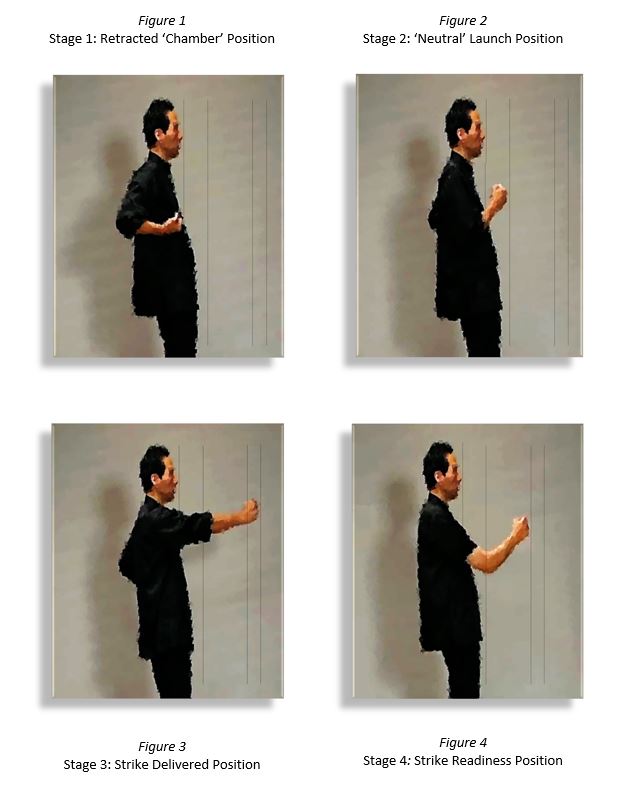
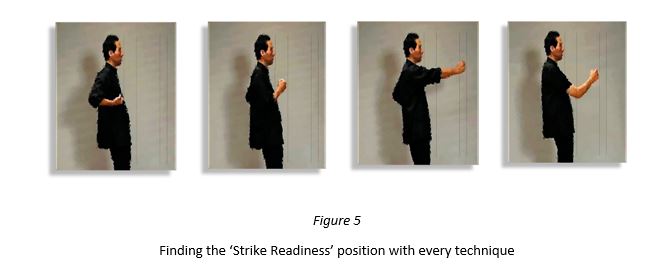
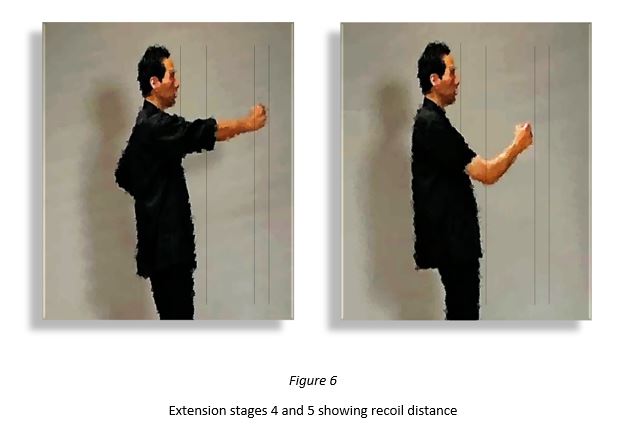
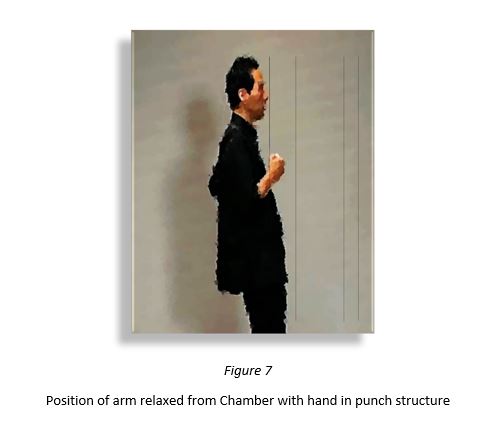
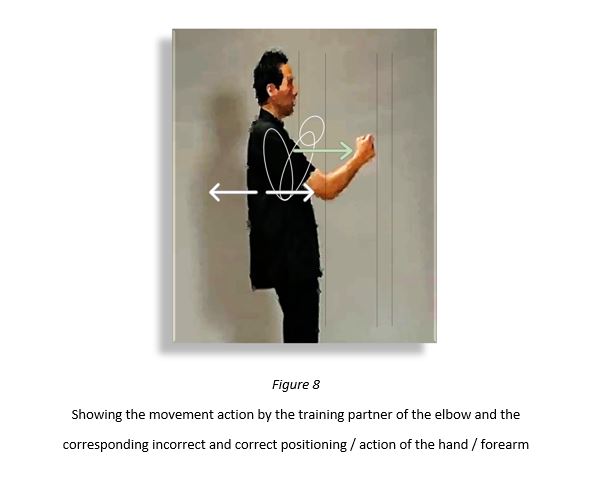
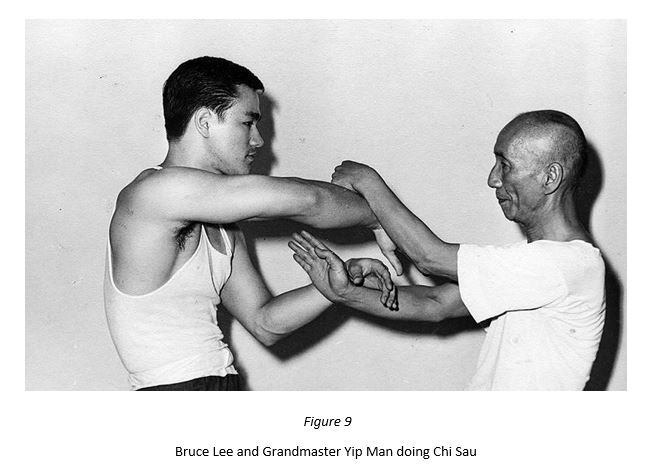
You must be logged in to post a comment.